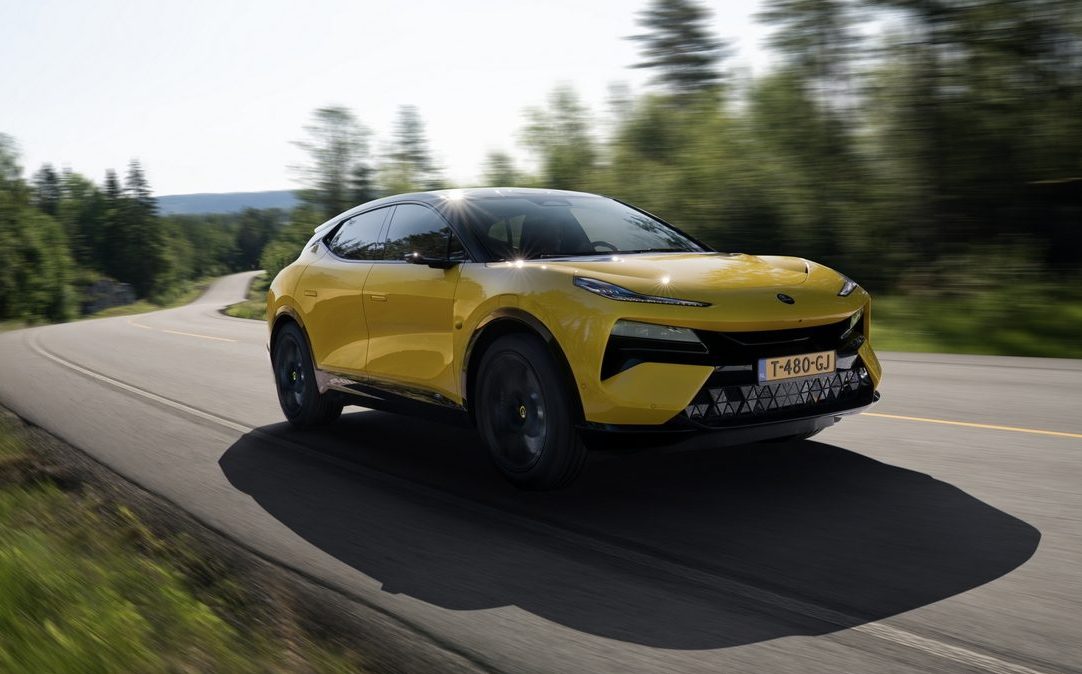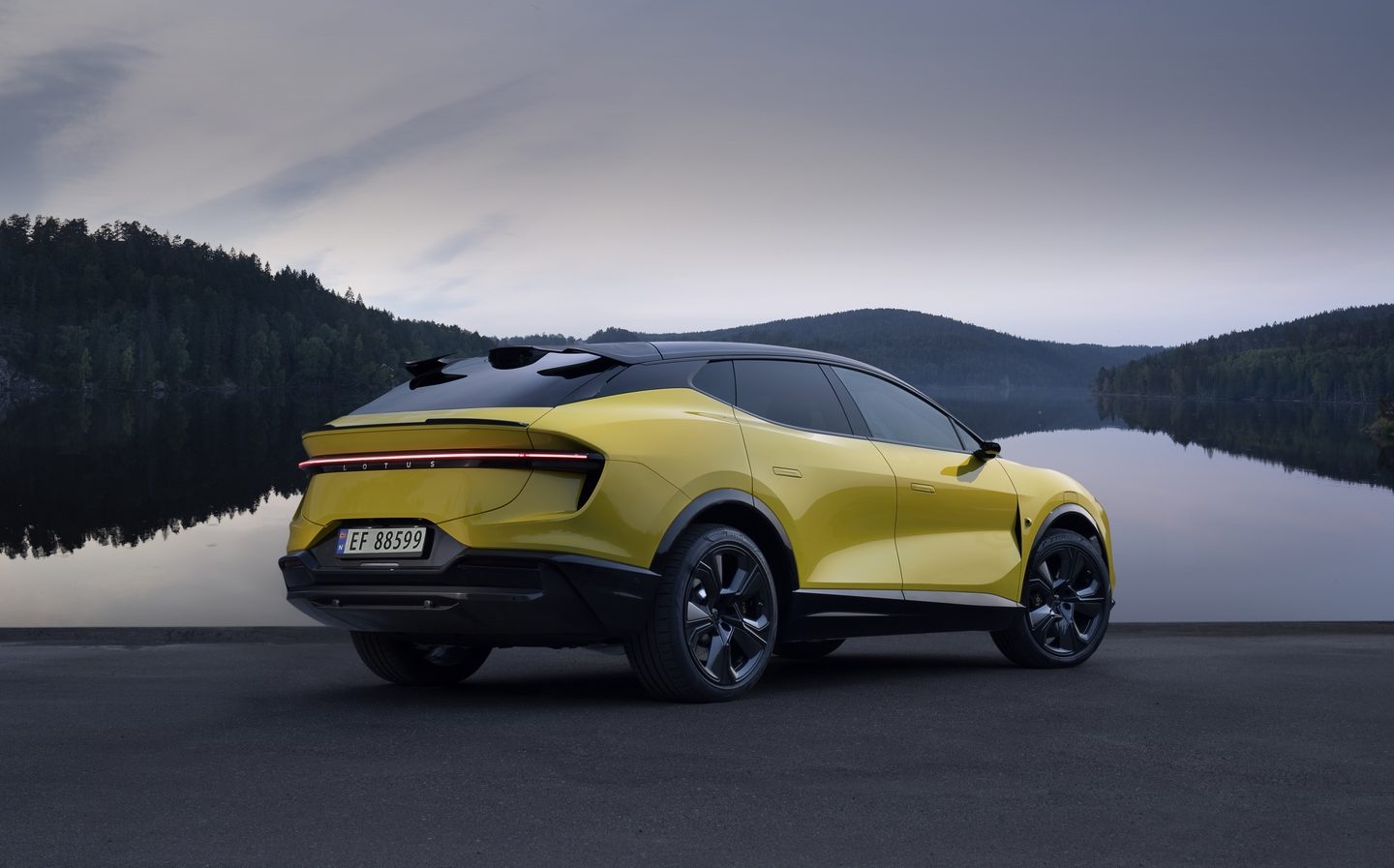Lotus Eletre 2024 review: Is the electric Lotus SUV an abomination or a class act?
What would Colin Chapman think?
Colin Chapman, the unassumingly named mastermind behind Lotus, once summarised the brand’s ethos as “simplify, then add lightness”, so the engineering legend must have been turning in his grave when Lotus announced the Eletre — a 2.5-tonne “hyper-SUV” with electric propulsion and a luxurious interior. It’s everything the likes of the Elan, Elise and Exige were not, and launching it with a Lotus badge risks alienating the brand’s die-hard fans.
But as your average Lotus enthusiast still becomes priapic over the thought of their third-hand 1996 Elise, we get the impression Lotus isn’t all that bothered about attracting their ire. The firm is trying to appeal to a new type of customer; one with a healthy bank account and an interest in new tech. The truth is, if the brand wants to survive it’ll need to do more than appeal to its loyal bobble-hatters.
So, to quote another classic British institution… and now for something completely different.
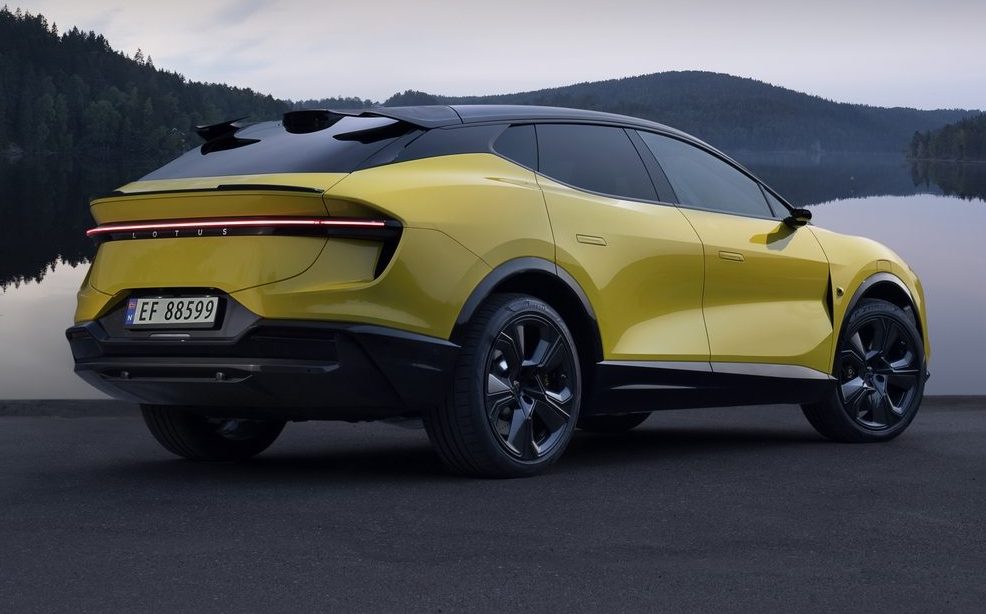
The Eletre is heralded as a sporty SUV with massive power and ample range, creating a kind of super-fast grand tourer with a bit of all-weather capability and claims of a relatively low carbon footprint. It’s also a practical car for super-rich Emira V6 customers to use regularly while their sports car just comes out on high days and holidays.
Unlike any other Lotus we’ve seen, the Eletre is enormous. It’s as broad as a Range Rover, about four inches longer than a Mercedes-Benz E-Class (and trust me, that’s longer than you think) and weighs more than a medium-sized planet. Well, the equivalent of two Volkswagen Polos.
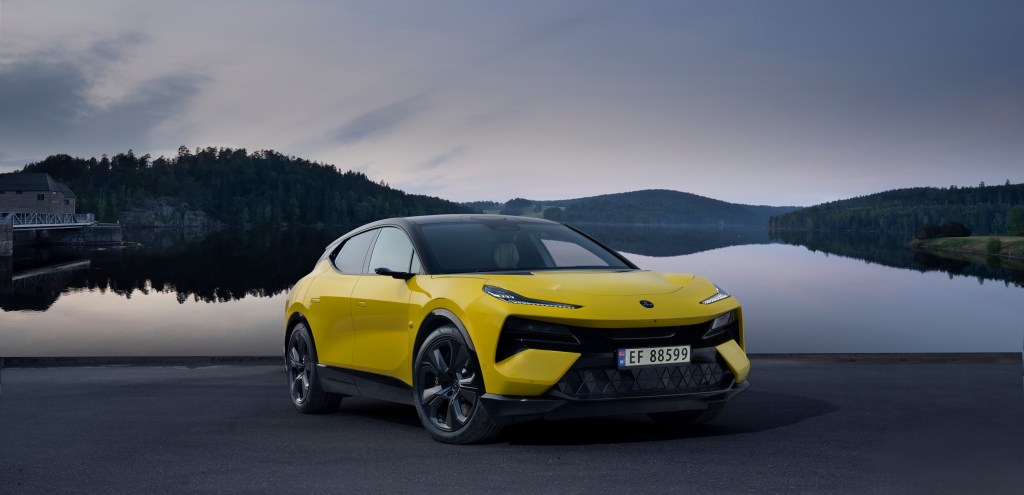
And it’s not exactly pretty. The rear-end design is supposed to ape that of the Lotus Emeya but it doesn’t look quite right on an SUV, and the nose makes it look like an angry toad. At least to my eyes. But beauty is in the eye of the beholder, and others may doubtless be enchanted.
The interior will only plunge them deeper into the Eletre’s thrall. The design is highly futuristic, with a massive central touchscreen and some slightly chintzy switchgear, but it’s all wrapped in beautifully tactile materials, and everything feels superbly made. We particularly like the way the cupholders sink into the centre console.
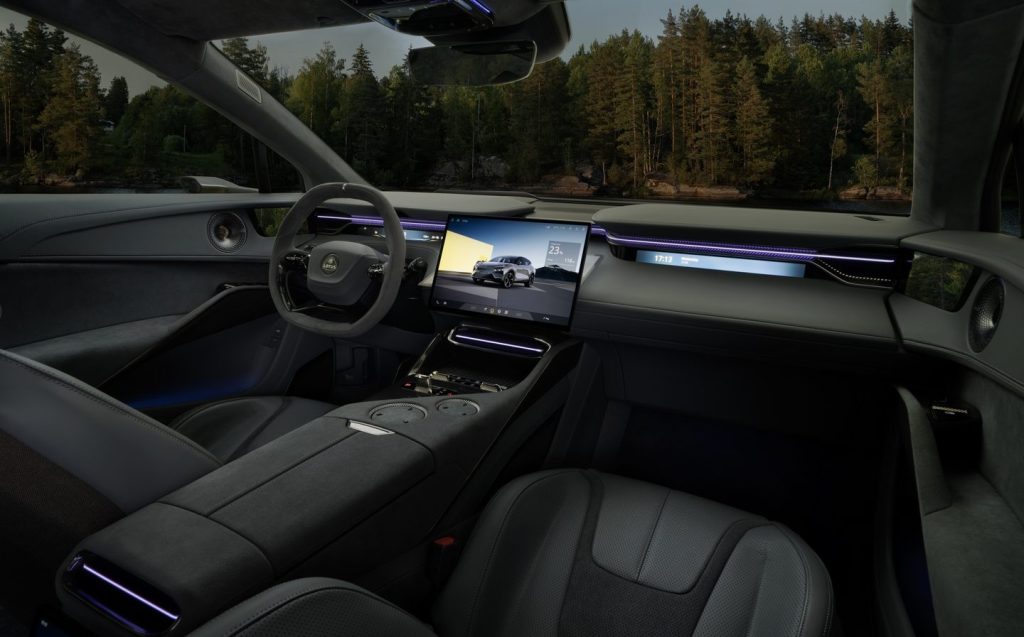
Admittedly, some parts of the cabin are a bit less captivating. Take the camera-based rear-view mirrors, with screens built into the door cards. They’re sharp and clear, and they’re preferable to the equivalents found in an Audi Q8 e-tron, but they’re still far from perfect. What with them being cameras, you can’t move your head to change the angle of view, and that makes the whole arrangement seem awkward to use — certainly at first. But Lotus reckons it adds a few miles to the range, so it might be considered a sacrifice worth making.
The Eletre’s interior, though, is a lovely place to spend time, and it’s festooned with tech. The massive touchscreen is really quick to respond, and the graphics are great, while the size means the icons have room to breathe and the menus are intuitive enough.
The digital instrument cluster is small, but you don’t really use it because there’s a huge head-up display projected onto the windscreen, providing all the information you need. And the passenger can see some of that data, too, via a thin display on the passenger side of the dashboard. Perfect for those who like to nag you about how fast you’re going.
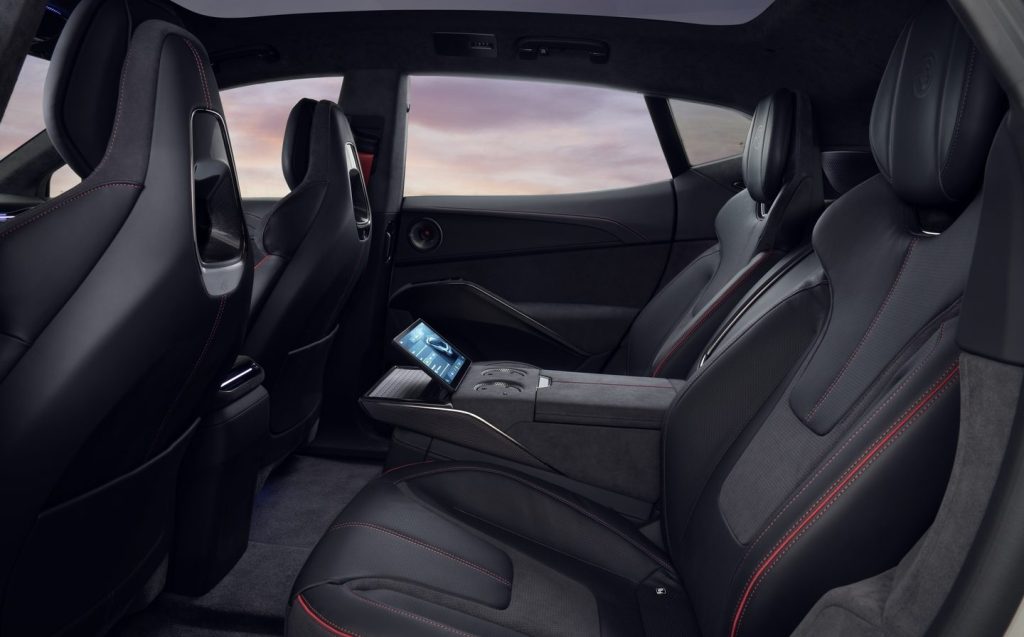
Even if they’re unimpressed with your speed, they will be comfortable; the seats are beautifully sculpted and there’s plenty of seat adjustment in the front, while those in the back get a surprising amount of headroom considering the car’s roofline.
There’s a lot of legroom back there, too — enough to stage a small football tournament, or at least a kickabout with a few mates.
And the boot is similarly cavernous, although exactly how much space there is will depend on whether you choose a four- or five-seat Eletre. Either way, though, it’s the sort of space that will leave a BMW X6 owner red-faced in a game of What’s on Your Drive Top Trumps.
All this space comes at a price, though. The Lotus Eletre is a big car and its weight of 2,520kg jars a little for a brand that is all about simplicity and lightness. Of course, if you’ve never heard of Colin Chapman, have no interest in lightweight sports cars, and have never considered the effects of weight on ride and handling, you won’t care very much about that. What will matter more is the reason behind much of that weight: the battery pack.
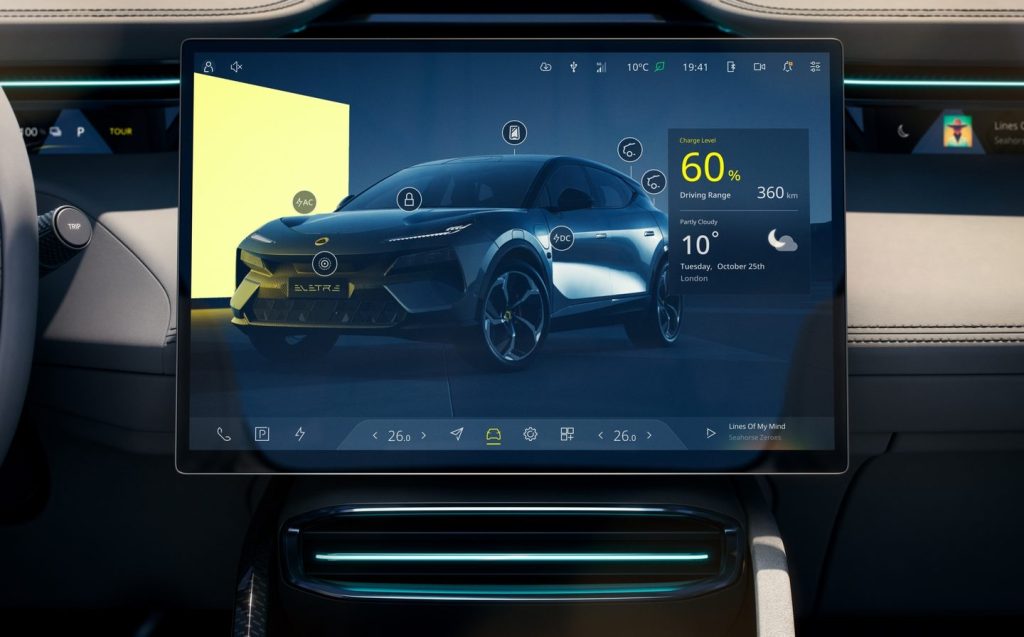
For those not yet versed in the ways of electric motoring, a battery with a capacity of 112kWh, as you’ll find in the Eletre, is massive. It’s almost three times the size of the battery in a basic Nissan Leaf, and that can do 168 miles on a charge, according to the EU-mandated efficiency test.
People with thick glasses will tell you that such an enormous power pack will not give the Eletre three times the range of the Leaf, thanks to boring technicalities, but Lotus still quotes a 373-mile range on a single charge, which will impress many EV buyers.
So what if it won’t do that in the real world (it won’t, especially on motorways)? It will manage well over 200 miles with no trouble at all, and possibly more than 300; and that’s about as far as you’re likely to travel in a single stint.
And when the battery is finally depleted, the Eletre will charge up very quickly indeed, thanks to DC speeds of up to 350kW. That won’t mean much to anyone new to EVs, or without an electrician’s certificate, but what it means is that if you can find a rapid charging point, Lotus claims the Eletre can be recharged from 10 to 80 per cent in 20 minutes. That is roughly what it takes to have a pee and a cup of coffee at Reading Services, albeit only on the westbound side. I haven’t timed it heading eastbound…
Anyway, the real reason for the Eletre’s inability to triple the Leaf’s range (aside from weight, drag and various other factors), is the amount of power on tap. Both the standard Eletre and the S we tested come with two electric motors that combine to produce 603bhp, then send it to all four wheels.
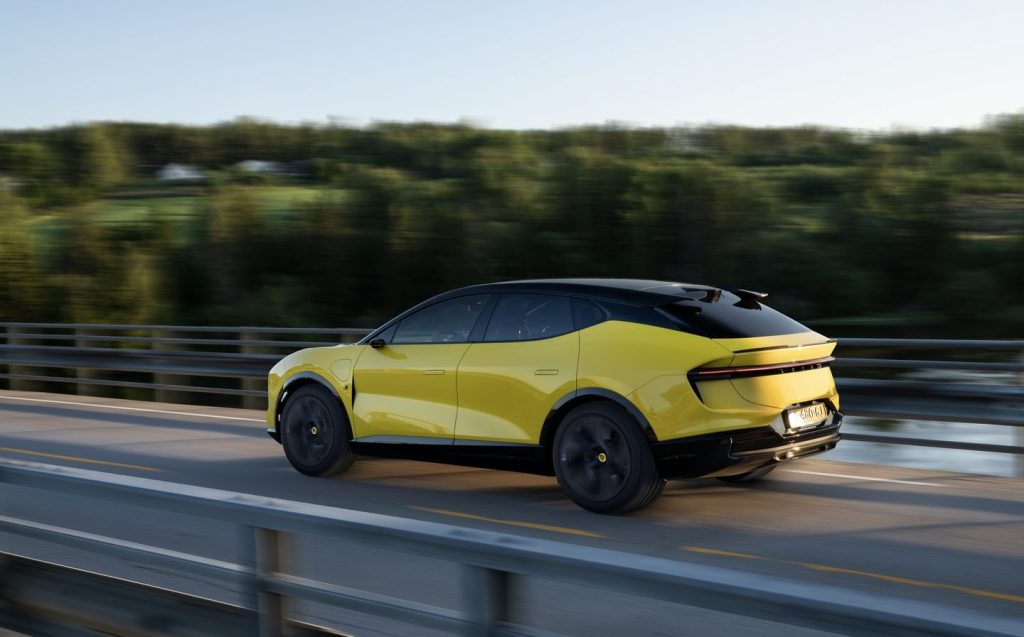
That makes the Eletre mighty quick. It’s almost as fast as a Porsche 911 from 0-62mph, while the 160mph top speed is higher than that of a standard BMW M3. If you go for the R model, that power output rises to an outrageous 905bhp — more than twice the power of a 911 — but the acceleration gets properly silly. Getting from 0-62mph takes less than three seconds.
So while Lotus might not have made the Eletre light, it has certainly made it fast, and although the driving experience might not be that recognisable to Elise owners, the Eletre can just about cope with its performance.
Yes, it will always feel heavy but the steering betrays some of the Eletre’s roots, with a lovely weight, feel and precision. The suspension is thoroughly competent, too, keeping the body fairly level even in fast corners, and ironing out the worst of the imperfections in the road.
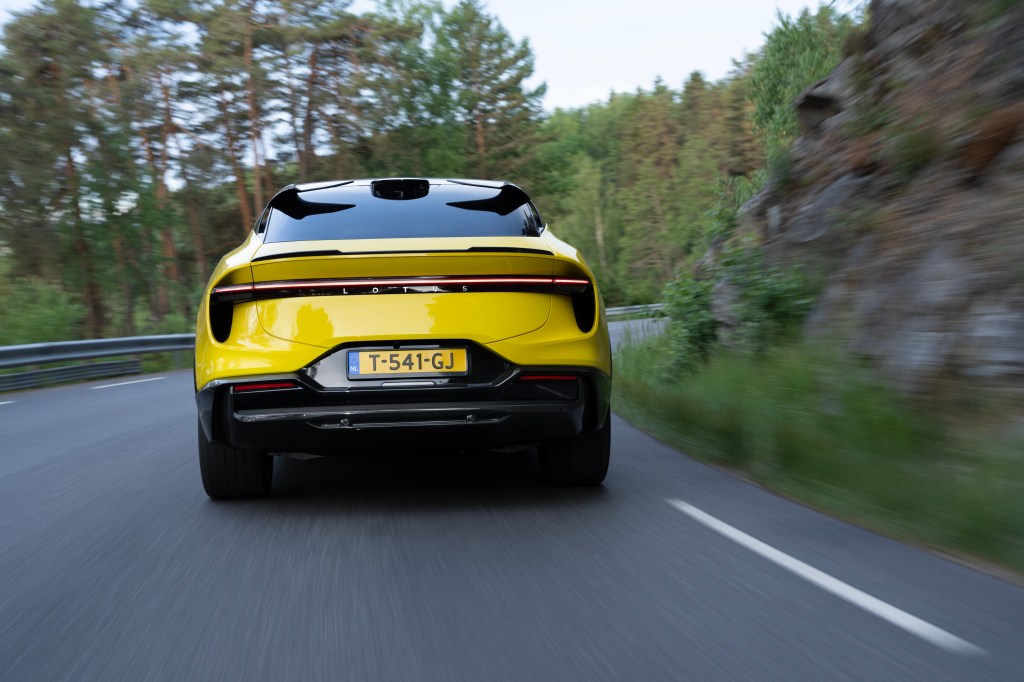
The ride is a bit brittle at low speeds, most likely because of the wheel size and the weight of the car, but it flows sweetly at higher speeds, loping along the road smoothly. And it’s brilliant on the motorway. Unless you live in the middle of a town or city, the big, bulky Eletre will be a great car to drive every day.
What this car isn’t, though, is a machine to rag around a racetrack. It doesn’t feel as though it would appreciate being gripped by the scruff of its neck and thrown into Paddock Hill Bend; it’s more of a sweeping A-road kind of car, best enjoyed a long way off its limits.
And let’s be honest, the people who drive anywhere near the limit probably won’t want this kind of Lotus. They’ll be much more taken with the petrol-powered Emira sports car.
And that’s really the thing about the Eletre. If you’re the kind of person who gets hung up on brand heritage and integrity, it probably won’t be for you. But if you want a sporty electric SUV that drives well and has a roomy, luxurious cabin, the Eletre might hold more appeal. It isn’t simple or light, but if people cared about that, SUVs would not sell in such quantities.
Chinese car makers
Lotus is part of Geely Automotive, a privately-owned Chinese car giant, which has a 51 per cent controlling stake (with 49 per cent owned by Etika Automotive, a Malaysian conglomerate).
Related articles
- If you found our review of the Lotus Eletre interesting, you might like to read 10 things to know before you buy an electric vehicle
- You may also like to check out the new Lotus Emeya, a four-door electric GT
- Have you seen the stunning “Theory 1” concept car showing Lotus’ thinking for the future?
Latest articles
- Lewis Hamilton wants to design a modern day Ferrari F40 with manual gearbox
- Dacia Bigster 2025 review: The ‘anti-premium’ family SUV that punches above its weight
- Your car’s worn tyres could be being burnt illegally in India, investigation reveals
- Open-top 214mph Aston Martin Vanquish Volante is world’s fastest blow-dry
- F1 2025 calendar and race reports: The new Formula One season as it happens
- Alfa Romeo Junior Ibrida 2025 review: Hybrid power adds an extra string to crossover’s bow
- Top 10 longest-range electric cars: all with over 400 miles per charge (officially)
- Renault 5 Turbo 3E ‘mini supercar’ confirmed with rear in-wheel motors producing 533bhp … and insane levels of torque
- British firm Longbow reveals ‘featherweight’ electric sports cars with 275-mile range


